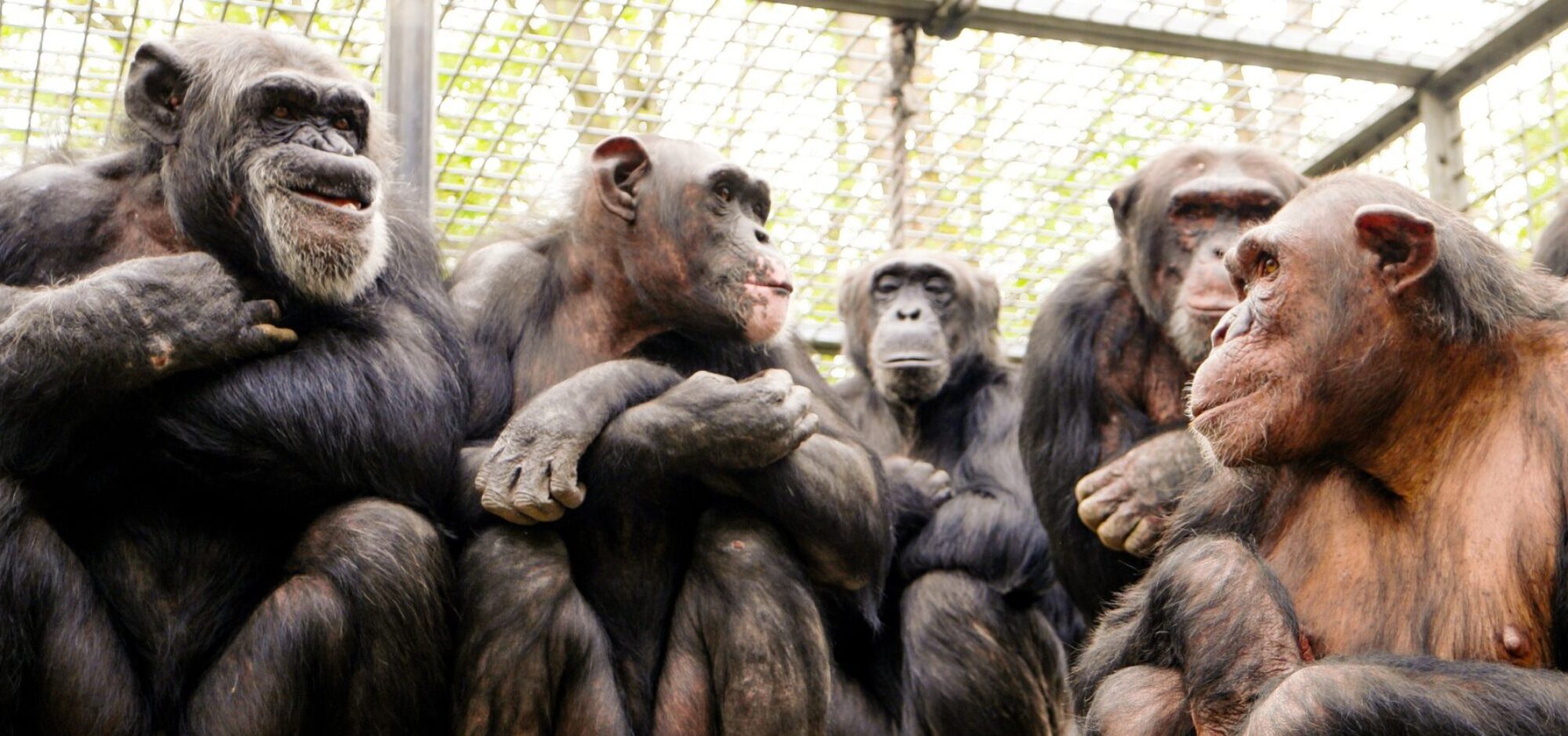“A neurocognitive model of ideological thinking” – Leor Zmigrod
Politics and the Life Sciences
Published online by Cambridge University Press: 02 August 2021
Leor Zmigrod
https://www.cambridge.org/core/journals/politics-and-the-life-sciences/article/neurocognitive-model-of-ideological-thinking/38CBDADC3414FA5783AE2730FAF36ACD
***
Leor Zmigrod – Um modelo neurocognitivo de pensamento ideológico
Publicado online pela Cambridge University Press: 02 de agosto de 2021
Leor Zmigrod
Resumo
O comportamento ideológico tem sido tradicionalmente visto como um produto de forças sociais. No entanto, uma ciência emergente sugere que as visões de mundo ideológicas também podem ser entendidas em termos de princípios neurais e cognitivos. O artigo propõe um modelo neurocognitivo de pensamento ideológico, argumentando que as visões de mundo ideológicas podem ser manifestações dos sistemas perceptuais e cognitivos dos indivíduos. Este modelo faz duas afirmações. Em primeiro lugar, existem antecedentes neurocognitivos para o pensamento ideológico: as disposições neurocognitivas de baixo nível do cérebro influenciam sua receptividade às doutrinas ideológicas. Em segundo lugar, existem consequências neurocognitivas para o engajamento ideológico: forte exposição e adesão a doutrinas ideológicas podem moldar sistemas perceptuais e cognitivos. Este artigo detalha o modelo neurocognitivo do pensamento ideológico e sintetiza as evidências empíricas que sustentam suas afirmações. O modelo postula que existem processos bidirecionais entre o cérebro e o ambiente ideológico e, portanto, pode abordar os papéis dos fatores situacionais e motivacionais na ação motivada ideologicamente. Este esforço destaca que uma abordagem neurocognitiva interdisciplinar para ideologias pode facilitar relatos biologicamente informados do cérebro ideológico e, assim, revelar quem é mais suscetível a ideologias extremistas e autoritárias. Ao investigar as relações entre os processos perceptivos de baixo nível e as atitudes ideológicas de alto nível, podemos desenvolver uma compreensão melhor de nossa história coletiva, bem como dos mecanismos que podem estruturar nosso futuro político.
(…)
… é pertinente usar as ferramentas da ciência moderna para perguntar: Existe uma relação entre as visões de mundo ideológicas e os mecanismos fundamentais de pensamento e raciocínio? E, em caso afirmativo, quão profundamente o efeito das ideologias penetra em nossos processos cognitivos?
A proposta detalhada aqui argumenta que há uma relação subjacente entre ideologias de alto nível e percepção e cognição de baixo nível que pode ser mais profunda e complexa do que Arendt imaginou. A proposta postula que as ideologias privadas dos indivíduos são manifestações de suas tendências perceptivas e cognitivas, influenciadas por experiências crônicas e temporárias. Além disso, sugere que o forte envolvimento com ideologias vigorosas pode, subsequentemente, moldar o funcionamento perceptivo e cognitivo. É importante ressaltar que a percepção e a cognição aqui são operacionalizadas em termos da literatura neuropsicológica – isto é, em termos da maneira como os cérebros processam e avaliam os estímulos. É, portanto, uma estrutura fundamentalmente neurocognitiva de ideologias, explorando como nossa compreensão do cérebro pode iluminar questões como: como as ideologias são internalizadas pelas mentes dos adeptos? Que fatores aumentam ou diminuem a suscetibilidade de um indivíduo ao pensamento ideológico? O forte envolvimento com uma ideologia molda o funcionamento cognitivo e neural do indivíduo?
(…)
O modelo neurocognitivo faz duas afirmações essenciais. Primeiro, ele argumenta que existem antecedentes neurocognitivos para o pensamento ideológico: as disposições neurocognitivas do cérebro moldam sua receptividade às doutrinas ideológicas. Em segundo lugar, pode haver consequências neurocognitivas para o engajamento ideológico: a exposição e a adesão a doutrinas ideológicas podem moldar os sistemas perceptuais e cognitivos.
(…)
Isso estende as afirmações feitas por filósofos políticos como Arendt a um novo território: as ideologias podem ter um impacto profundo nas mentes dos adeptos ao moldar seu funcionamento neural e cognitivo.
(…)
Em contraste com os relatos situacionais e motivacionais, o modelo neurocognitivo argumenta que as visões de mundo ideológicas refletem tendências cognitivas e perceptivas e, por sua vez, as ideologias podem influenciar os processos neurocognitivos de baixo nível (Figura 2C). Portanto, considera o pensamento ideológico como negociado neurocognitivamente, ao invés do produto de situações autoritárias ou necessidades psicológicas. No entanto, o modelo neurocognitivo ainda abre espaço para o efeito de situações e motivações. Situações que provocam estresse ou forte pressão social podem amplificar processos neurocognitivos (por exemplo, Lupien et al., 2007; Schoofs et al., 2008) que orientam os indivíduos – em diferentes graus – a se comportar de maneiras ideológicas. Por exemplo, uma situação estressante pode prejudicar a flexibilidade cognitiva e a função executiva (Alexander et al., 2007; Plessow et al., 2011; Schoofs et al., 2008) e, assim, produzir um comportamento ideologicamente rígido e tornar o indivíduo receptivo à propaganda.
(…)
O modelo neurocognitivo também pode informar o trabalho sobre a herdabilidade genética de crenças ideológicas (Hatemi et al., 2013; Hatemi et al., 2014; Israel et al., 2015) postulando mecanismos específicos através dos quais variações genéticas contribuem para diferenças neurocognitivas e, portanto, atitudes ideológicas. Portanto, é capaz de postular teorias mecanicistas sobre como os processos biológicos moldam as visões de mundo ideológicas. Além disso, os modelos situacionais e motivacionais assumem efeitos unilaterais: o modelo situacional vê as situações como se impondo ao indivíduo (Figura 2A), e o modelo motivacional vê as necessidades do indivíduo como um estímulo à expressão do pensamento ideológico (Figura 2B). Em contraste, o modelo neurocognitivo postula explicitamente que há processos bidirecionais entre o ambiente ideológico e o cérebro (Figura 2C).
(…)
Suporte empírico para o modelo neurocognitivo
As evidências dos antecedentes neurocognitivos e das consequências das ideologias podem ser encontradas nos campos florescentes da neurociência política e da psicologia social experimental. Um trabalho recente revelou que os processos de tomada de decisão cognitivos e perceptivos ideologicamente neutros estão relacionados a convicções e crenças ideológicas de nível superior (Rollwage et al., 2018; Rollwage et al., 2019; Zmigrod et al., 2018; Zmigrod, Rentfrow, & Robbins 2019; Zmigrod, Rentfrow, Zmigrod, & Robbins 2019; Zmigrod, Zmigrod, Rentfrow, & Robbins 2019; Zmigrod, 2020b). Três traços cognitivos que recentemente mostraram conferir suscetibilidade ao pensamento ideológico são particularmente notáveis: (1) inflexibilidade cognitiva, (2) consciência metacognitiva prejudicada e (3) processamento de acumulação de evidência perceptual mais lento.
(…)
A rigidez com que os indivíduos percebem e processam os estímulos geralmente estava ligada à rigidez de suas crenças ideológicas. Consequentemente, essas descobertas demonstram que as disposições nas tendências implícitas de processamento de informações podem estar ligadas a visões de mundo ideológicas explícitas de alto nível.
Em segundo lugar, pesquisas cognitivas recentes ilustraram uma relação entre metacognição prejudicada – a consciência de nossos processos cognitivos – e dogmatismo ideológico tanto na esquerda quanto na direita (Rollwage et al., 2018). Aqui, também, os pesquisadores empregaram paradigmas neuropsicológicos e modelos computacionais para revelar diferenças entre indivíduos que eram ideologicamente moderados versus extremos. Indivíduos que eram ideologicamente extremos foram caracterizados por metacognição prejudicada, sugerindo que a capacidade dos indivíduos de estar cientes e regular seu funcionamento cognitivo pode conferir suscetibilidade a ideologias internalizantes. Há um suporte empírico crescente para a ideia de que a resistência às evidências na esfera sociopolítica pode, portanto, emergir de um comprometimento neurocognitivo em processos metacognitivos (Fischer et al., 2019; Heyes et al., 2020; Kleitman et al., 2019; Morris et al., 2019; Morris et al., 2019; al., 2019; Rollwage et al., 2019; Sinclair et al., 2019).
(…)
De fato, pesquisas da ciência cognitiva da religião (Barrett, 2000; Bering, 2006; Norenzayan & Shariff, 2008; Sosis & Alcorta, 2003) ilustraram as consequências neurocognitivas do engajamento ideológico. A religião é um candidato ideológico útil devido à intensidade de seus rituais e à variabilidade nas práticas religiosas. Esta linha de trabalho demonstrou que a adesão repetitiva às práticas religiosas parece moldar a percepção visual, a neurofisiologia e as políticas cognitivas de metacontrole. Por exemplo, a percepção visual hierárquica de ateus mostrou ser diferente da dos neocalvinistas (Colzato et al., 2008; Colzato, van Beest, et al., 2010), católicos romanos italianos (Colzato, van Beest, 2010) , Judeus ortodoxos (Colzato, van Beest, 2010a) e budistas zen taiwaneses (Colzato, Hommel, et al, 2010).
(…)
Além disso, os neurocientistas postularam que a religião pode servir como um antídoto neural para a ansiedade e a incerteza (Inzlicht et al., 2011). Correspondentemente, foi demonstrado que invocar conceitos religiosos pode alterar o monitoramento neurofisiológico de erros de participantes religiosos. Especificamente, entre os crentes religiosos, contemplar pensamentos religiosos (como o amor de Deus) pode diminuir a negatividade relacionada ao erro, um sinal neural que emerge do córtex cingulado anterior que está implicado no monitoramento do desempenho e na resposta afetiva aos erros (Good et al., 2015) Além disso, maior zelo religioso – uma forma fanática de crença – foi associado a menor negatividade relacionada ao erro ao completar uma tarefa de Stroop perceptual (Inzlicht et al., 2009), corroborando a ideia de que a religião pode atuar como um paliativo para reduzir a ansiedade por causa de suas propriedades epistêmicas gerais e de criação de significado (Inzlicht et al., 2011). É importante qualificar esses resultados e abordar a bidirecionalidade potencial desses efeitos; a exposição religiosa pode moldar a neurocognição dos indivíduos e, ao mesmo tempo, as predisposições neurocognitivas podem influenciar o tipo e o nível de zelo com que os indivíduos aderem à ideologia religiosa. Consequentemente, embora a religião ofereça um valioso caso de teste para o impacto das ideologias no cérebro, os processos de auto-seleção ideológica também devem ser considerados.
(…)
Um modelo neurocognitivo de pensamentos e ações motivados ideologicamente, portanto, tem o poder de ilustrar que as posições ideológicas têm bases neurobiológicas e sintetizar a gama de pesquisas neurocientíficas e cognitivas recentes sob teorias e hipóteses testáveis (Alford et al., 2005; Batrićević & Littvay, 2017; Fowler et al., 2008; Hatemi & McDermott, 2012a, 2012b; Ksiazkiewicz & Krueger, 2017; Leong et al., 2020; Nam et al., 2017; Zmigrod & Tsakiris, 2021). O modelo é sensível às relações causais, ciente das ligações bidirecionais entre ambientes e processos mentais, e capaz de dar uma linguagem de mediação (Ksiazkiewicz et al., 2016; Oskarsson et al., 2015) e mecanismos moderadores para a pesquisa complexa sobre a genética das orientações ideológicas (por exemplo, Dawes & Weinschenk, 2020; Hatemi et al., 2014; Twito & Knafo-Noam, 2020). De que forma os genes que moldam a cognição e a percepção têm efeitos a jusante no comportamento ideológico? Os genes que codificam a reatividade ambiental tornam um indivíduo particularmente suscetível a movimentos ideológicos convincentes? Romper a hereditariedade da ideologia política – e avaliar outros aspectos da ideologia, como dogmatismo, extremismo e hostilidade interpessoal – permitirá uma biologia da ideologia mais informativa. Notavelmente, pesquisas no campo da biopolítica ilustraram que atribuir processos ideológicos à biologia pode ajudar a promover a tolerância política (Baker & Haas, 2020; no entanto, ver Suhay et al., 2017); conduzir essa ciência pode, portanto, ter repercussões positivas no mundo mais amplo.
A pesquisa de ponta na intersecção das ciências políticas e biológicas está agora nos permitindo fazer novas perguntas. Quais fatores neurobiológicos determinam a receptividade ou resistência de um indivíduo aos sistemas ideológicos? Quais são as vantagens e perigos neurocognitivos de um forte engajamento com ideologias? E quando é que a missão da ideologia importa? Essas questões socialmente pertinentes têm o poder de aumentar nossa compreensão tanto da política quanto do cérebro, e de elucidar a natureza do “cérebro ideológico”. Uma abordagem neurocognitiva das ideologias, portanto, nos permitirá explorar paradoxos atemporais, bem como as origens das questões sociais contemporâneas – abrindo caminho para uma compreensão informada e informativa dos papéis da biologia e da experiência na formação das crenças ideológicas privadas dos cidadãos.” [Google Tradutor]


